Blog, Industry News
Complements rescue dogs to quickly locate survivors
Written by: Tom Timperman, GSSI
Disaster scenes are chaotic and noisy, with rescue teams climbing over collapsed structures, feverishly working to find survivors. Technology can play an important role in the effort, whether the structural collapse is due to earthquake, human-caused disaster, flood or tsunami, mudslide, avalanche, or even urban terrorism. Several options are currently available, but the most effective option is the combination of highly trained search-and-rescue dogs together with ultra-wide band (UWB) radar. Pairing the dog’s dynamic nose with the UWB radar’s ability to see through building materials in determining the approximate distance to the survivor is a huge benefit for urban search-and-rescue (USAR) teams. Already used successfully all over the world, UWB radar would be a great addition to the tools available to rescuers in the United States and Canada, providing current FCC radio emissions regulations can be amended.
Methods used to locate survivors trapped under collapsed debris
Four technologies are typically used by USAR teams to locate survivors of structural collapses at disaster scenes: Rescue dogs, acoustic vibration monitoring devices, borehole cameras, and ultra-wide band (UWB) radar.
Each method has its advantages and disadvantages. Here’s a run-down of the most commonly applied methodologies.
Rescue dogs are indeed amazing. Quick and effective, trained dogs are incredibly dynamic, can cover large areas, and work remotely from their handler. However, dogs cannot determine the distance to a buried survivor, and can be affected by scent drift during windy conditions. Just like humans, they are also prone to fatigue and stress, and require downtime to recuperate. An eye-opening report on the limitations of search-and-rescue dogs came out of the recent large earthquake in Ecuador. The emotional story concerned a beloved and acclaimed dog that found a handful of survivors, only to succumb to heat exhaustion due to over-use.
Acoustic vibration monitoring devices can be placed on top of the rubble pile to listen for sounds from a survivor – tapping, yelling, kicking, or noise of any kind. They require a high level of user expertise, and require almost complete silence. Such silence is very difficult to achieve at these frantic scenes, where military, police, and fire department personnel are present, along with relatives and other rescue groups. The greatest disadvantage to acoustic devices is that they require active participation by a survivor. If the survivor is incapacitated or unconscious, they will unfortunately not be capable of such participation.
A borehole camera is a lightweight, three-in-one device that contains a small camera, flashlight, and microphone. These sophisticated “selfie sticks” provide visual confirmation of the presence of a survivor or victim. They enable two-way communication between rescuers and survivors, but have a limited depth of penetration (3-4 meters) compared to other options. Their primary drawback is that they require direct line-of-sight to the survivor through an opening of some kind in the rubble pile, which is not always available.
Ultra-wide band (UWB) radar offers the most effective and efficient compliment to search dogs by providing very fine and immediate motion detection. The radar sends out 800,000 pulses per second while measuring the two-way transit time between the unit and the survivor. UWB radar is also extremely safe; the radar energy emitted is equal to one-hundredth of the power emitted by a cell phone.
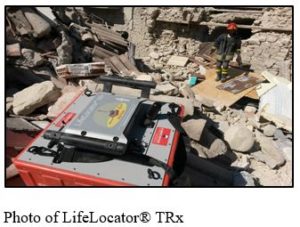 Application of such radar driven technology is not new, having been widely used for automotive collision-detection systems, wireless communications, indoor positioning, and sensor networks. It has recently been adapted to USAR scenarios because it provides a wider band of radar detection, yet is less susceptible to interference than narrow band radar, which provides poor down-range resolution and inability to accurately determine the distance to the victim [1].
Application of such radar driven technology is not new, having been widely used for automotive collision-detection systems, wireless communications, indoor positioning, and sensor networks. It has recently been adapted to USAR scenarios because it provides a wider band of radar detection, yet is less susceptible to interference than narrow band radar, which provides poor down-range resolution and inability to accurately determine the distance to the victim [1].
As mentioned previously, UWB radar offers the most effective complement when combined with the efforts of the rescue dog. In concert with the dog, rescuers can work quickly and effectively across a predetermined grid on top of the rubble pile. The rescue dog may indicate the presence of a survivor, but cannot tell if the survivor is one, eight, or twelve meters away. By applying UWB radar technology, rescuers can now quickly “localize” the approximate distance to the survivor.
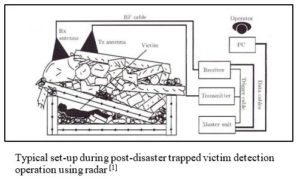 Radar is not diverted by scent, does not get fatigued, and does not require silence or line of site. It is also a good method of determining where not to dig, which is important on a rubble pile.
Radar is not diverted by scent, does not get fatigued, and does not require silence or line of site. It is also a good method of determining where not to dig, which is important on a rubble pile.
Also, it detects user respiratory and cardiac motion, so it cannot be used to detect the deceased. UWB radar cannot see through metal, and is susceptible to noise interference from cell towers or radio communication systems.
The LifeLocator® TRx
Headquartered in Nashua, NH, GSSI began developing the first UWB radar technology for search-and rescue use in 2002, in response to post-911 Homeland Security market needs. USAR agencies had been seeking technologies that could be adapted to search-and-rescue applications, and they determined UWB radar technology to be an excellent option. The first generation of the equipment was dubbed LifeLocator® and released in 2005.
Over the next decade, design improvements were made based on operator feedback and advances in radar technology. In 2015, GSSI released the LifeLocator® TRx, which incorporates a variety of improvements specifically designed to meet the challenging field conditions found in structural collapse search operations. The LifeLocator® TRx detects survivor respirations (as few as 3 per minute; as many as 30 per minute) to a maximum distance of 10 meters (33 feet), and survivor motion to a maximum distance of 12 meters (40 feet).
The TRx can be operated by a single person, and is simple-to-use in detecting survivor motion in as little as 10 seconds. It features a ruggedized design with a Wi-Fi antenna mounted inside the carry handles, making it less susceptible to breakage. The addition of a second battery gives the unit a hot swappable battery configuration, which eliminates downtime while changing batteries on the fly.
More importantly, the TRx now includes greatly enhanced noise filtration and noise immunity capability. The laptop user interface features a noise floor indicator to show the operator the strength of nearby noise interference. This is absolutely critical, since the greater the interference, the greater the possibility of the radar producing a ‘false positive’ survivor location.
Previous generations of the LifeLocator® employed a single radar receiver, while the TRx incorporates twin receivers. Twin receivers improve detection in many situations. For example, if the operator places the system over an area that is partially metal and partially another building material, the TRx will still be able to detect the presence of a survivor under the area that is not under metal. Placing the equipment at different angles gives rescuers different ways to work a pile more intelligently and effectively.
 LifeLocator® TRx saves lives
LifeLocator® TRx saves lives
The LifeLocator® TRx has been successfully deployed by fire departments and rescue organizations across the globe in response to major catastrophes. A global French USAR team recorded a save following the 2010 Haiti earthquake, while Chinese rescue teams experienced the same success in Sichuan Province in 2008.
Unfortunately, the cutting edge technology cannot currently be used in the United States and Canada due to existing Federal Communications Commission equipment standards.
To ensure that local search-and-rescue teams have access to the most advanced and reliable technology on the market, GSSI encourages the FCC to consider waiving these standards for manufacturers of such life-saving devices. Such consideration will allow the dedicated USAR community to provide the most reliable support during the most catastrophic circumstances, enabling them to quickly and reliably locate survivors.
[1] Trapped-Victim Detection in Post-Disaster Scenarios using Ultra-Wideband Radar, by AN Nezirović, 2010, repository.tudelft.nl.
Blog, Industry News, trenchless products
 Hutchinson, Kansas – StraightLine HDD, Inc. announced the implementation of an upgrade to its popular Performix Mud Mix System. At the heart of the Performix System is the centrifugal pump, which generates the best laminar flow in the industry.
Hutchinson, Kansas – StraightLine HDD, Inc. announced the implementation of an upgrade to its popular Performix Mud Mix System. At the heart of the Performix System is the centrifugal pump, which generates the best laminar flow in the industry.
The performance pump now features an upgraded silicon-carbide shaft seal. Compared to traditional ceramic seals, the new seal represents a considerable advancement in resiliency when subjected to the highly abrasive elements present in mud mixing. In field testing, silicon carbide seals improve service life by a factor of three over ceramic seals.
The Performix pump retains its lubricated housing feature, which protects the pump seal from mechanical damage if the pump ever runs dry.
The new seal is a direct, no-modification required, replacement to the existing ceramic seal.
Blog, Industry News, trenchless people
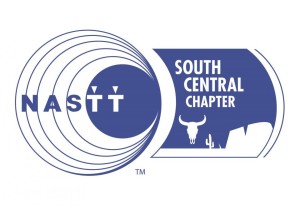 The South Central Chapter was established in 2015 to serve the members of NASTT from Oklahoma, Texas and the south central area of the United States. The Chapter is holding their second event on June 20 at the University of Texas, Arlington. This year we are excited to announce that the Chapter is also offering a student scholarship of $1,500!
The South Central Chapter was established in 2015 to serve the members of NASTT from Oklahoma, Texas and the south central area of the United States. The Chapter is holding their second event on June 20 at the University of Texas, Arlington. This year we are excited to announce that the Chapter is also offering a student scholarship of $1,500!
Completed applications will be reviewed by the NASTT South Central Chapter board members. Selections will be based on academic achievement, demonstrated leadership, honors achieved, work experience, goals/aspirations, and interest stated in the underground construction industry. Completed applications must be received by 11:59 p.m. on June 1, 2017. Completed applications must be submitted to smatthes@ditchwitch.com. The scholarship award presentation will take place at the annual NASTT/UTA South Central Chapter event in Arlington, Texas on June 20, 2017.
For all the details on the scholarship, click here.
For details on the conference, please visit the conference website.
Blog, Industry News, trenchless projects
 April 4, 2017 – LAKE MILLS, Wisc. – HammerHead Trenchless Equipment, a Charles Machine Works company, has introduced the new HammerHead Roughneck™ R200, the first two-inch rock hammer engineered specifically for horizontal directional drilling applications. The R200, the smallest pneumatic rock hammer of HammerHead’s Roughneck line, is designed to expand the capabilities of small utility drills allowing 7000- to 10,000-ton class directional drills to effectively drill through solid rock as well as other difficult soil conditions.
April 4, 2017 – LAKE MILLS, Wisc. – HammerHead Trenchless Equipment, a Charles Machine Works company, has introduced the new HammerHead Roughneck™ R200, the first two-inch rock hammer engineered specifically for horizontal directional drilling applications. The R200, the smallest pneumatic rock hammer of HammerHead’s Roughneck line, is designed to expand the capabilities of small utility drills allowing 7000- to 10,000-ton class directional drills to effectively drill through solid rock as well as other difficult soil conditions.
The R200 rock hammer was made to be the most efficient system available to HDD contractors in communications, gas, electrical and water service installations. The R200 model drills a 3.125-inch pilot hole.
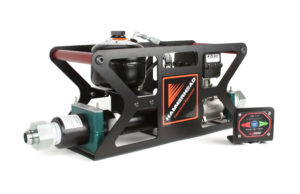 “The R200 allows you to use a small drill on jobs you couldn’t before. If you needed to drill through solid rock, you’d have to bring a large drill to supply enough power which requires more labor, more support equipment, and more time to complete the job. With the R200, contractors can save money by maximizing the capabilities of a small drill,” explained Josh Hood, HammerHead HDD product manager. “When you’re working in small spaces or drilling short distances such as under a road bed, it makes sense to use a small drill and now you can, regardless of soil conditions.”
“The R200 allows you to use a small drill on jobs you couldn’t before. If you needed to drill through solid rock, you’d have to bring a large drill to supply enough power which requires more labor, more support equipment, and more time to complete the job. With the R200, contractors can save money by maximizing the capabilities of a small drill,” explained Josh Hood, HammerHead HDD product manager. “When you’re working in small spaces or drilling short distances such as under a road bed, it makes sense to use a small drill and now you can, regardless of soil conditions.”
A key feature unique to the R200 rock hammer is the electronically-controlled air flow. With the touch of a button, the operator can adjust the air flow from open to closed and anywhere in between which allows them to manage the power of the hammer on the fly. This feature is critical in situations where soil conditions change abruptly. The ability to reduce or increase power quickly prevents costly interruptions during the bore.
The HammerHead R200 air hammer shares similar features with the other models of the HammerHead Roughneck line. The Roughneck R400, R500 and R600 are recognized as some of the most trusted and productive pneumatic rock hammers available for HDD applications. All four models are capable of drilling at rates of up to 150-feet per hour with exceptional steering performance. Additionally, all Roughneck rock hammers feature side-load high-flow housing, a patented pull back kit system and a lightweight control station.
Serviceability is a key design feature in all HammerHead pneumatic hammers and the R200 is no exception. Patented spanner wrench holes in the front and rear of the hammer reduces the number of breakout jaws required when performing maintenance or changing out rock bits.
The HammerHead R200 rock hammer is offered as a complete system to get contractors up and running. The system includes a R200 Roughneck air hammer, offset and angled offset bits, patented pullback kit, control station/oiler with tethered electronic remote control, hydraulic breakout tooling, 2.5-inch universal high-flow housing, and a conversion kit specific to the drill.
The R200 rock hammer system is available from HammerHead Trenchless Equipment or from authorized dealers, worldwide. Authorized dealers can be found on the web at www.hammerheadtrenchless.com or by calling 800.331.6653. (International: + [1] 920.648.4848).
Blog, Industry News, trenchless projects
 NASTT’s South Central Regional Chapter is hosting their second event on June 20!
NASTT’s South Central Regional Chapter is hosting their second event on June 20!
If you’re in the South Central region, plan to attend the Trenchless Technology and Pipe Conference for Water, Sewer, Oil, and Gas Applications: TTP 2017, sponsored by South Central Chapter of NASTT.
Abstracts for presentations are currently being accepted for the event.
The abstract submission deadline is May 1 and final presentation submission deadline is May 31.
Abstract information (paper is not required):
Abstracts should be submitted in the following format:
- The abstract should not be more than 500 words.
- Please type all text in 12 point Times New Roman.
- Name of the Author/s should be included, with the presenting author’s name underlined.
- Please include the full contact details of the presenting and corresponding author(s) (Address, Phone, Fax, and Email).
Abstracts should be submitted by email, as an attached document, in MS Word format (.doc or .docx) to CUIRE at cuire@uta.edu. Abstract should be submitted by May 1, 2017.
Get all the abstract details on the conference website here.
Be a part of this growing chapter’s history and network with your industry peers!
Blog, Industry News, trenchless products
THOMPSON, CONNECTICUT USA, April 4, 2017
Numa, the world’s leading drilling technology provider, offers one of the largest ranges of DTH rock drilling hammers and bits available in the industry today. The company boasts over 110 DTH products for drilling holes 3½ to 48 inches (89 – 1219 mm) in all types of conditions, applications, and industries.
Numa works with drillers on job sites around the world to support its products and gain first hand insight for advancing DTH product design. The company holds 13 patents, with more pending, for DTH equipment capable of drilling vertical, horizontal, and reverse circulation holes. Numa products are used in over 11 industries including construction, oil & gas, mining, quarry, geothermal, water well, and many more.
Numa’s wide range of DTH products includes:
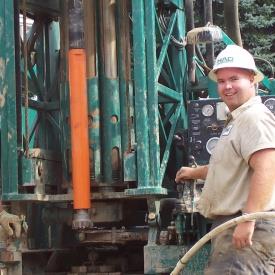 SMALL HAMMERS AND BITS
SMALL HAMMERS AND BITS
Drills holes from 3-1/2″ to 10″ (89 – 254 mm) Numa offers eighteen different small diameter hammers for diverse drilling conditions. Built specifically for longevity and penetration rate, Numa’s Patriot® hammers and bits drill at high frequency and require less air. Even against high heads of water.
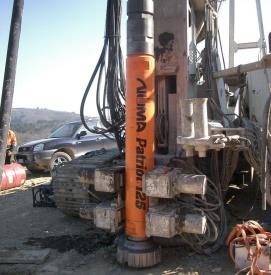 MID-RANGE HAMMERS AND BITS
MID-RANGE HAMMERS AND BITS
Drills holes 7-7/8” to 20” (200 – 508 mm) Numa’s mid-range hammers and bits provide a combination of speed and life to excel against hard, abrasive and just plain nasty conditions. A simplified hammer design with less internal components promotes less vibration and smooth operation.
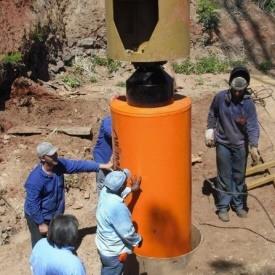 LARGE HAMMERS AND BITS
LARGE HAMMERS AND BITS
Drills holes 18” to 48” (457 – 1219 mm) Numa pioneered the large hammer industry and leads the market in performance and reliability. Our forward thinking designs have proven themselves again and again in demanding applications around the world.
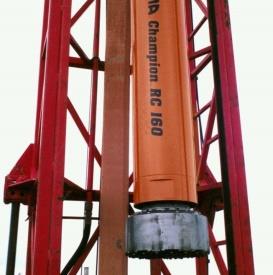 REVERSE CIRCULATION HAMMERS AND BITS
REVERSE CIRCULATION HAMMERS AND BITS
Drills holes 5-1/4” to 36” (133 – 914 mm) Numa’s Reverse Circulation products have the unique ability to bring all cuttings up the center of the hammer and drill string to be safely collected at the surface, which is essential in today’s environmentally conscious society.
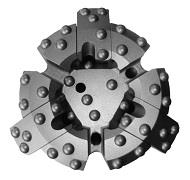
SUPER JAWS® BITS
Drills holes 5-1/2” to 42” (457 – 1066 mm) Super Jaws provides superior performance for simultaneous drilling and casing in hard rock and overburden formations. Wings extend out to drill a full diameter hole then retract to bring all tooling to the surface. No expensive tools are left in the hole and no casing teeth are required.
ABOUT NUMA
Numa provides the world’s leading drilling technology with over 110 DTH Hammer and Bit products serving 11 different industries. Our products are capable of drilling vertical, horizontal, and reverse circulation holes from 3½ to 48 inches (89 – 1219 mm) in diameter and are used in 105+ countries. We have built our customer-centric reputation on providing the highest value in products, performance and personal service available in the rock drilling industry.
 Application of such radar driven technology is not new, having been widely used for automotive collision-detection systems, wireless communications, indoor positioning, and sensor networks. It has recently been adapted to USAR scenarios because it provides a wider band of radar detection, yet is less susceptible to interference than narrow band radar, which provides poor down-range resolution and inability to accurately determine the distance to the victim [1].
Application of such radar driven technology is not new, having been widely used for automotive collision-detection systems, wireless communications, indoor positioning, and sensor networks. It has recently been adapted to USAR scenarios because it provides a wider band of radar detection, yet is less susceptible to interference than narrow band radar, which provides poor down-range resolution and inability to accurately determine the distance to the victim [1]. Radar is not diverted by scent, does not get fatigued, and does not require silence or line of site. It is also a good method of determining where not to dig, which is important on a rubble pile.
Radar is not diverted by scent, does not get fatigued, and does not require silence or line of site. It is also a good method of determining where not to dig, which is important on a rubble pile.









